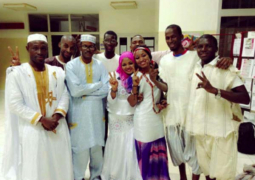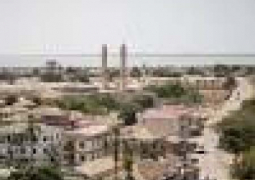The Christian period of Holy Week begins from Palm Sunday and concludes with the glorious celebration of Easter Sunday. It marks the end of Lent. The week is called holy not because it is holier than all the other weeks in the year. Secondly, the week is also called holy not because people or Christians have to behave or do holy things in it.
The week is called holy because it leads to the center and most fundamental celebrations of the faith of Christians. It is Passion Week because beginning from Palm Sunday, Christians begin to learn, meditate and follow the path that led to the entry of Jesus Christ into
Holy Week to the Christian believer is the most sensitive and interesting week with regards to the celebration of the death and resurrection of Jesus Christ. The week is full of meaningful days of celebration in Churches.
On Palm Sunday, the noteworthy procession with palm branches makes the Christian to associate by enacting the actions of those that received Jesus Christ as he entered
After Palm Sunday, every other day of the week is also filled with meaningful and touching celebrations and readings from the scriptures (Bible).
The main highlighted days during Holy Week are Holy Thursday, Good Friday, Holy Saturday and Easter Sunday. Each of these days emphasises an aspect of Jesus’ life before he died and his resurrection to life.
On Holy Thursday, the Mass of the Lord’s final supper with his disciples is celebrated. This celebration includes the reading of the scriptures that talks about the last supper of Jesus and his apostles. Also there is the reacting of Jesus washing the feet of twelve apostles to show his love for them, which he taught that they should do for one another. In fact the theme of the celebration is on the love of Jesus for his disciples.
He washed the feet of the apostles and shared a meal with them as an expression of the disciples’ solidarity with him. As long as they want to show affiliation with Jesus, the disciples were to wash each others feet and love one another. The love they have for one another should be expressed in sharing a meal (agape meal).
On Good Friday, the death of Jesus is remembered. There is no celebration because the day is void of celebration but the death of Jesus is remembered. Christians on Good Friday go to church to follow in prayer the Stations of the Cross, i.e.: the steps that led to the death of Jesus Christ. There is also another prayer Service of Veneration of the Cross on which Jesus Christ died. This means that in that prayer service, believers come and show how the Cross on which Jesus died, though reminds them of death, but it was a necessary death that brought salvation to the world.
On the night of Saturday in Holy Week called, “Holy Saturday”, the liturgy of Easter is prepared, which is a very detailed and meaningful process of celebration of the death of Jesus. The celebration, if there are candidates for conversion through the sacraments of initiation (i.e. baptism, confirmation and Eucharist), makes is longer and more intense.
On the night of the celebration of the resurrection of Jesus, the Easter Candle is lighted and taken in procession showing Jesus Christ by representation as Light of the World (Lumen Christi). Secondly, during the celebration, a long range of readings from the Bible are read depicting the history of salvation of God’s people from Genesis to the New Testament advent of Jesus Christ, Saviour of the world. During the celebration of the Easter vigil candidates for Christian initiation are presented and baptised and confirmed in the faith. They who longed and requested to belong to the church (the Body of Christ) now through the sacraments, are born into the new life in Christ. They appear in white garments symbolising new life in Christ Jesus.
The Easter vigil culminates at the Easter Sunday dawn and day celebrations. All this time, Christians are in jubilant mood proclaiming the risen Lord Jesus Christ. They raise Alleluia after Alleluia, singing the glory of God in raising to Life Jesus who died.
The joy of Easter exists in the celebrations both in church and in the Christian homes. Christians become more cheerful because of the salvation in Jesus Christ, the risen Saviour of the world. On that day too, Christians share merriment in the food and drinks they share.




